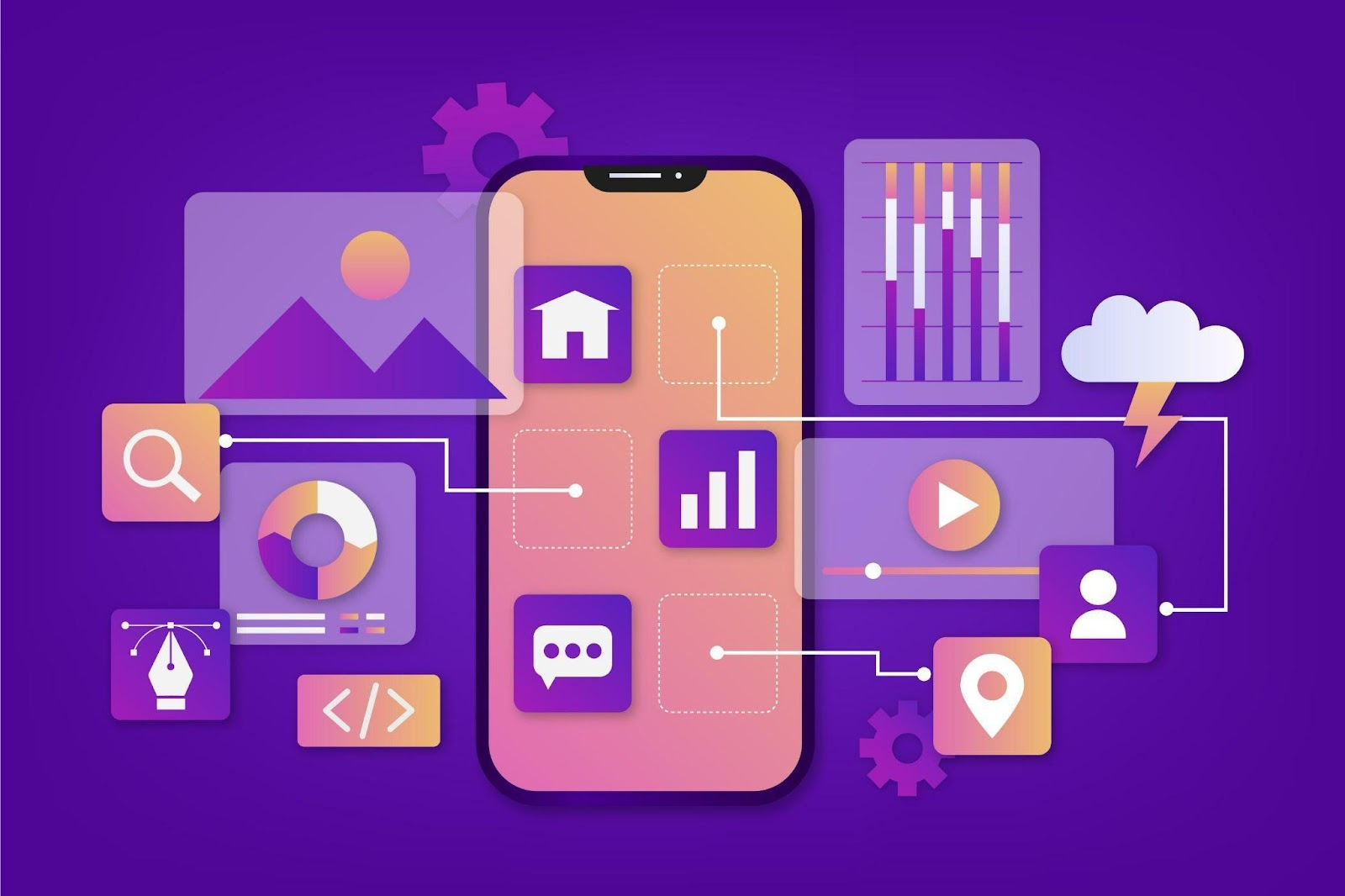Cross-platform development refers to the approach of creating software or applications that can be used on different types of hardware platforms. A cross-platform mobile app is designed to work on both iOS and Android platforms. Cross-platform development allows you to create a single codebase that can be deployed on any platform, rather than having to build different versions of the software for each platform. This approach not only saves app development time and resources but also makes it easier to maintain and update the software across different platforms.
With the increasing use of mobile devices, more and more businesses are investing in app development to augment their ROI by fortifying customer engagement with their products and services but, having said that, app development can be an expensive process, especially for small businesses and startups. Thanks to the cross-platform development that has made it possible to reduce the cost of app development.
Cross-platform development facilitates building mobile apps that work seamlessly across multiple platforms, including iOS, Android, and Windows. The single codebase approach significantly reduces development time and cost. Here are some ways how cross-platform development approach helps in optimising the development cost:
Need only one developer
Cross-platform development enables developers to use a single programming language to create an app that can run on multiple platforms. This eliminates the need to learn different languages for each platform and saves resources that would have been required to develop multiple apps for each platform. So one developer alone can cope with the iOS and Android developments using a single cross-platform development approach.
Reduced Development Time
Using a cross-platform approach, developers don’t need to create separate apps for different platforms, which eventually reduces the development hours by almost half. Developers can create an app in a matter of weeks rather than months, which means businesses can get their apps to market faster and start generating revenue sooner.
Reusable Code
One of the biggest advantages of cross-platform development is the ability to reuse code across different platforms. This means that developers can write the code once and use it across different platforms, which significantly reduces the development cost. This also ensures consistency in the app design and functionality across different platforms, which is essential for providing a seamless user experience.
Lower Cost of Maintenance
Developing apps for different platforms require separate teams and resources, which can increase the cost of maintenance. However, with cross-platform development, businesses can reduce the cost of maintenance by using a single codebase for all platforms. This means that any updates or changes can be made to the codebase, and the changes will be reflected across all platforms simultaneously. This significantly reduces the time and effort required for maintenance, which in turn reduces the overall cost. A single codebase can reduce the time taken to find the issues down the line, as developers only need to perform fixes in one place instead of multiple codebases. This means that a single fix can address the issue for all instances.
Lower Cost of Testing
Testing is an essential part of app development, and it can be a costly process, especially for businesses that develop apps for different platforms. However, with cross-platform development, businesses can reduce the cost of testing by using a single codebase for all platforms. This means that developers can test the app once and ensure that it works seamlessly across all platforms. This significantly reduces the time and effort required for testing, which in turn reduces the overall cost of app development.
Access to a Wide Range of Development Tools and Frameworks
Cross-platform development provides access to a wide range of development tools and frameworks, which can be used to develop high-quality apps. These tools and frameworks are designed to simplify the development process and reduce the overall cost of app development. With cross-platform development, developers can choose from a range of frameworks, such as React Native, Xamarin, and Flutter, which provide pre-built components and libraries, reducing the time and effort required to build an app from scratch.
For instance, react native has taken the application development world by storm. Some of the major Applications like Facebook, Instagram, Uber, and Skype are powered by React Native; to name a few. RN has become a popular choice amongst developers to develop mobile applications; since it does not require them to learn separate languages to develop Applications for different platforms.
Easy Integration with Third-Party Services
In today’s digital world, apps need to be integrated with various third-party services, such as social media platforms, payment gateways, and analytics tools. With cross-platform development, businesses can easily integrate their apps with these services, which can significantly reduce the time and cost of development. This is because cross-platform development provides access to a wide range of pre-built libraries and components that can be used to integrate apps with third-party services.
Wrapping up
In conclusion, cross-platform development provides a cost-effective solution for businesses looking to develop mobile apps. By reducing the development time, providing access to a wide range of development tools and frameworks, and lowering the cost of maintenance and testing
Author Bio:

Piyush Jain is the founder and CEO of Simpalm, a cross-platform app development company. Piyush founded Simpalm in 2009 and has grown it to be a leading mobile and web development company in the DMV area. With a Ph.D. from Johns Hopkins and a strong background in technology and entrepreneurship, he understands how to solve problems using technology. Under his leadership, Simpalm has delivered 350+ mobile apps and web solutions to clients in startups, enterprises, and the federal sector. He leads the business and engineering team to build the mobile and web product solution for clients.
